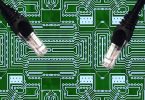The Internet has become an integral part of our daily lives, connecting us to people, information, and services around the world. As technology continues to advance, the way we access the Internet is also changing. One of the key technologies that is shaping the future of Internet connectivity is internet cable.
Internet cable, also known as fiber optic cable, is a type of high-speed data transmission technology that uses glass or plastic threads to transmit data at incredibly fast speeds. These cables are capable of carrying large amounts of data over long distances, making them an ideal choice for broadband Internet connections.
One of the key advantages of internet cable is its speed. Fiber optic cables can transmit data at speeds up to one gigabit per second, which is much faster than traditional copper cables. This means that users can download files, stream videos, and access online services with minimal lag and delays.
In addition to speed, internet cable also offers greater reliability and stability compared to other forms of Internet connection. Fiber optic cables are less susceptible to interference and signal loss, meaning that users can enjoy a consistent and stable Internet connection regardless of the weather or other external factors.
Furthermore, internet cable has the potential to revolutionize the way we connect to the Internet in the future. As more and more companies invest in building out fiber optic networks, internet cable is becoming increasingly accessible to consumers. This means that more people will be able to enjoy fast and reliable Internet connections, even in remote or rural areas.
Moreover, the advancement of technology such as 5G and Internet of Things (IoT) is driving the demand for faster and more reliable Internet connections. Internet cable is well-positioned to meet this demand, providing the infrastructure needed to support these new technologies and innovations.
However, internet cable still faces challenges in terms of deployment and affordability. Building out fiber optic networks can be expensive and time-consuming, and not all areas have access to this technology. Additionally, the cost of upgrading to internet cable may be prohibitive for some consumers.
Despite these challenges, the future of Internet cable looks promising. With advancements in technology and the increasing demand for fast and reliable Internet connections, internet cable is set to play a key role in shaping the way we connect to the Internet in the future. As more companies invest in building out fiber optic networks and expanding access to this technology, the potential for high-speed, reliable, and affordable Internet connections is within reach for everyone.








